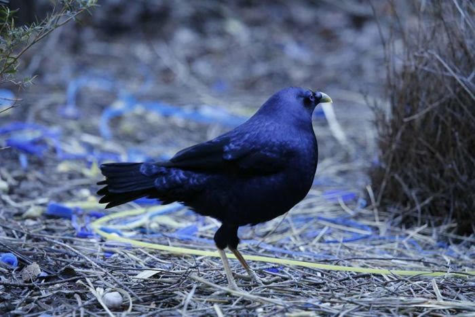Feature Creature: Bowerbirds

Chivalry is not quite extinct according to the intelligent minds of bowerbirds. Also known as Ptilonorhynchidae, this bird family has 20 different known species. Renowned for its courting process, male bowerbirds know how to impress with their soon to be mates with their sharp wit for engineering. In the wet forests of New Guinea and Australia, crafting a bower to their mates liking is a way bowerbirds can woo them. During mating season, the males build the bowers and decorate them with colors from berries and flowers in order to attract other females. After doing so, a male bowerbird waits for a female and defends his bower. Its mating ritual is complex with lots of singing, dancing, pleading, and pulsing its pupil, but once a female accepts the male she builds them a nest, and male is off to court others.
Bowers are made of intertwined sticks that form an “avenue” for the females, and are made in a clear patch of land. By decorating it with colorful berries plastic, leaves, shells, feathers, stones and flowers, females are more attracted to the male’s building ability, and judges their intelligence based on the complexity of the bower. Many Bowerbird males use colorful berries to paint their bowers for their mates or the surrounding area for them. Flower petals and leaves are most often scattered along the floor for extra decoration.
Bowerbirds are fruitivors and live off of fruits from the trees, but they will occasionally consume things like seeds or insects if fruits are scarce or they are in breeding. They are often preyed upon by feral cats and wild foxes, but their population remains relatively stable. Legislation is currently protecting bowerbirds and their habitats to ensure their continued stability.










